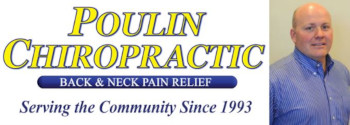About Ashburn and Herndon Chiropractic and Ashburn and Herndon Scoliosis
a deviation of the spinal curve, producing body disfigurement
The scoliotic curve may affect the cervical, thoracic, lumbar or combination of any of these areas of the spine.
There are two types of scoliosis: adolescent onset and late stage degenerative.
- Adolescent: With scoliosis screenings at schools and by primary care physicians in annual check-ups, you probably knew you had scoliosis early on. Adolescent scoliosis affects 10% of people and occurs 7 times more frequently in girls than in boys. It is a lifetime-condition demanding gentle, watchful care during its growing years (the late teenage years). Whatever your curve at the end of the growth years, it is permanent and will not likely progress. Some severe cases may require surgery to slow or stop the curve's progression.
- Degenerative: In late stage degenerative scoliosis, you may not recognize your spine's curve unless you experience some back pain or other symptom. Late stage degenerative scoliosis develops with aging, resulting in stenosis of the spinal canal.
Regardless, Cox Technic seeks to maintain mobility and function in the scoliotic spine and carefully monitor the progression of the curve. You will be encouraged to implement exercises (Mehta particularly), nutrition, bracing and Cox Technic. If surgery becomes evidently required, a referral will certainly be made.
A thorough, clinical examination of the affected area(s) of the spine that may include imaging is important to your recovery.
In office, Poulin Chiropractic of Herndon and Ashburn uses Cox Technic Flexion Distraction and Decompression to widen the canal space, drop the intradiscal pressure and increase the disc height to relieve pain and encourage as much mobility into the scoliotic spine as possible.
You will welcome the Cox Technic manipulation that gently "pulls you apart," as many patients describe the treatment or say they need. Depending on the area(s) of the spine affected, the appropriate Cox Technic Flexion Distraction and Decompression protocols, possibly combined with other forms of care, will be applied. Depending on the severity of your pain and symptoms, gentler Protocol I Cox Technic may be applied until 50% relief of pain or more restoring Protocol II may be applied to guide your recovery. You may lie facing down, up or on your side for treatment.
In office adjunctive care may hasten your recovery.
At home you may want to avoid sitting for long periods of time, wear a support brace if recommended, take nutritional supplements that help rebuild disc cartilage, do exercises - particularly Mehta exercises * - that strengthen your spine, sleep on a supportive mattress, sit in an ergonomically designed chair, and modify your daily activities as needed.

- Degenerative Osteochondrosis with Thoraco-lumbar scoliosis seen in the elderly
- Treatment of L4-5 Disc Protrusion and Lumbar Scoliosis Treated Successfully with Cox Technic
- Interesting Anomalous 9th Rib Formation with Scoliosis
- L4-L5 Spinal Stenosis With Synovial Cyst Relieved with Cox® Decompression Adjusting Following Epidural Steroid Injection With No Help
- Surgical Correction For Spinal Stenosis: An Example Of Seeing That The Patient Gets The Proper Care For The Condition
- Failed VAX-D Treatment of L4-5 Disc Protrusion and Lumbar Scoliosis Treated Successfully with Cox® Technic
- Cox Technic Relieves Pain from Degenerative Scoliosis and Spinal Stenosis
- "S" Curve Scoliosis Pain Relieved wtih Chiropractic Cox Technic
- Moderate Adolescent Idiopathic Scoliosis (AIS) While Being Braced, Now Presents with Lumbar Disc Disorder with Sciatica, Treated with Cox Technic Protocols
- Concomitant Tourette's and Adolescent Idiopathic Mild Scoliosis Helped by Cox Technic
- den Boer, Andersen, Limbeek, Kooijian: Treatment of idiopathic scoliosis with side-shift therapy. Euro Sp J 1999; 8:406-410
- Mamyama T et al: Side shift exercise for idiopathic scoliosis after skeletal maturity. Stud Health Technol Inform 2002; 91:361-4
- Negrini S, Fusco C, et al: Exercises reduce the progression rate of adolescent idiopathic scoliosis: Results of a comprehensive systematic review of the literature. Disabil Rehabil 2008;30(10):772-85

